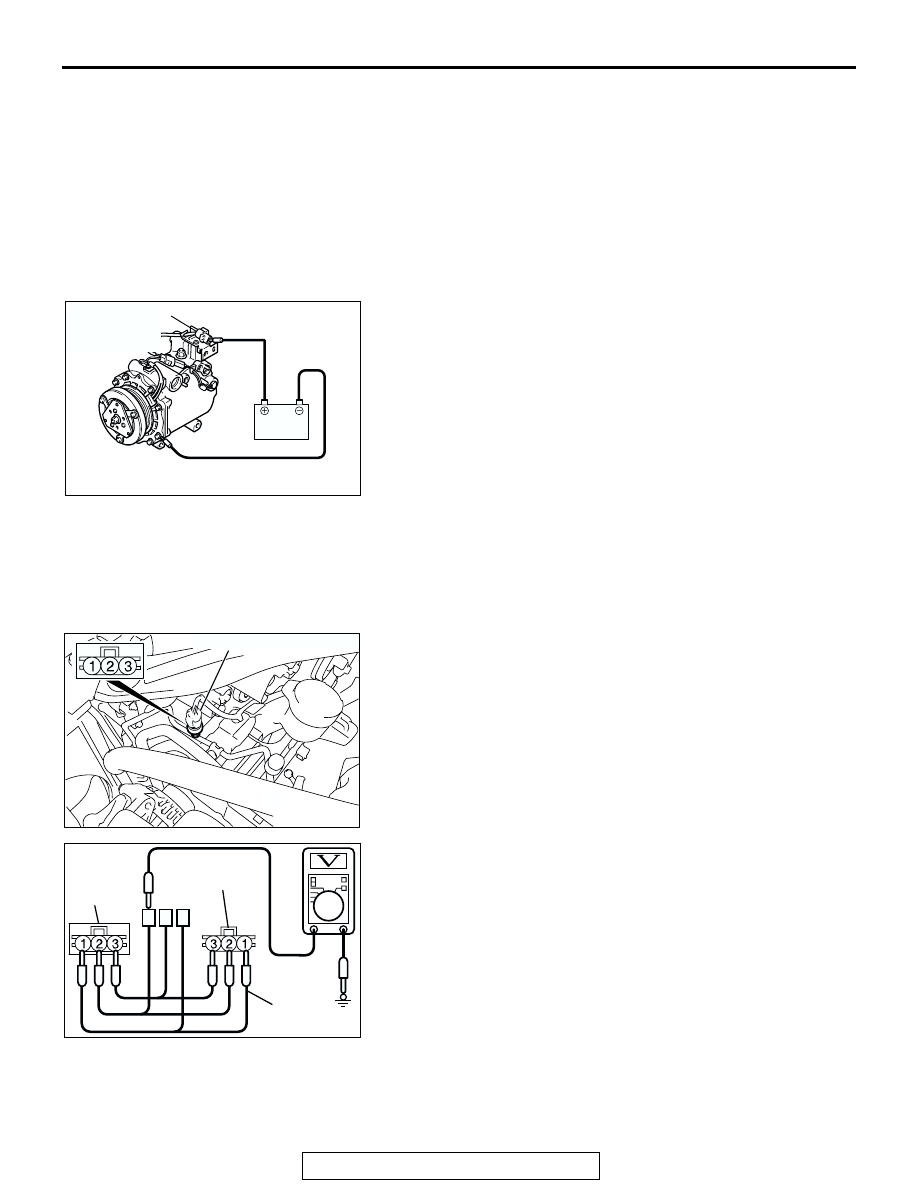Mitsubishi Galant (2004+). Manual - part 781

ON-VEHICLE SERVICE
TSB Revision
HEATER, AIR CONDITIONING AND VENTILATION
55A-263
ON-VEHICLE SERVICE
REFRIGERANT LEVEL TEST
M1552008400408
Use the refrigerant recovery station to remove all of the refrig-
erant, and then calculate the amount of the refrigerant and
charge it.
A/C COMPRESSOR CLUTCH TEST
M1552019900032
1. Disconnect the air conditioning compressor clutch connector
to the air conditioning compressor clutch.
2. Connect positive battery voltage directly to the connector for
the air conditioning compressor clutch.
3. If the air conditioning compressor clutch is normal, there will
be a "click." If the pulley and armature do not make contact
("no click"), there is a malfunction.
SIMPLE INSPECTION OF THE A/C PRESSURE
SENSOR
M1552014700118
1. Assemble a gauge manifold on the high pressure service
valve.
2. Disconnect the A/C pressure sensor connector and connect
special tool test harness MB991658 as shown in the illustra-
tion.
3. Turn ON the engine and then turn ON the air conditioner
switch.
AC206292AB
A/C COMPRESSOR
CLUTCH
CONNECTOR
AC305034
A/C PRESSURE SENSOR
AD
AC307368
A/C
PRESSURE
SENSOR
SIDE
MB991658
AB
HARNESS SIDE